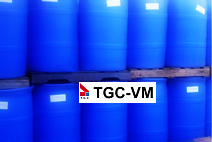Essential Methods in the Concreting Works
Superplasticizers and plastic ants water reducers, accelerators and retarders and curing, air-entraining and water-repellent mass: Adjuvant are mixed with cement to improve the physical and aesthetic characteristics of the concrete but also to facilitate the casting. These additives are adapted to the evolution of the composition of the binders and the quality of the aggregates crushed rocks as well as to the expectations of the user companies’ fluidity, workability, resistance to help them formulate materials which present the best technical, economical and ecological compromise on construction sites. The adjuvant is almost the only lever on which concrete producers and pre-manufacturers can play to meet the constraints of the formulation. The use of the concrete foam agent is essential there.
What is an adjuvant?
Adjuvant for concrete, mortars and groutgive the following definition: Product incorporated at the time of mixing the concrete or mortar at a dose less than or equal to 5% by mass of the cement content of the concrete or mortar, to modify the properties of the mixture in the fresh and hardened state.

Originally, the concretes put their sugar to delay the setting, of the blood of beef to improve the plasticity, of the guts and viscera of pigs to evacuate the bubbles of air. Chemistry has made disappearance its practice characteristics. By-products of the paper industry gave rise to the first modern plasticizers and superplasticizers before the polymers can influence the characteristics of concrete by manipulating the different bricks of its chemistry: content and reaction to water, adaptation to the alkalinity of aggregates, neutralization of clays or electric charges of dyes.
Adjuvant assists in controlling the final characteristics of the material by influencing its mechanical, impact, abrasion, gel and chemical resistance, impermeability, color and appearance, Synod lists. They also participate in the implementation constraints by optimizing the rotation rates of the formwork and handling of the parts, the time of execution and putting back into service, the conditions of application temperature, humidity, immersion and, in fine, the production costs. They help to improve working conditions and respect the environment.
More heterogeneous components
The additional cost of the additives must not be greater than the savings made on the use and treatment of sands or aggregates of lower quality. The standard defines some large families of concrete adapted to specific environmental classes and use situations, specifying the minimum performance to be achieved. Concrete builders, who strive to optimize their costs, remain close to these minimums.
In each of its families, concrete producers are distinguished by the originality of their formulations. The adjuvant provides them with the molecules that allow them to adapt at the best cost to the evolution of the composition of the cement and the characteristics of the aggregates to produce.
More and more often, these producers are obliged to replace constituent, cement, sand or granulate, and to take into account the evolution of the additions limestone wired. The adjuvant is the most chemical and stable product of concrete constituents over time, says the technical director. It is also the easiest to replace to adapt a formulation, correct or compensate the effects of the introduction of new components on the final characteristics of the material.

